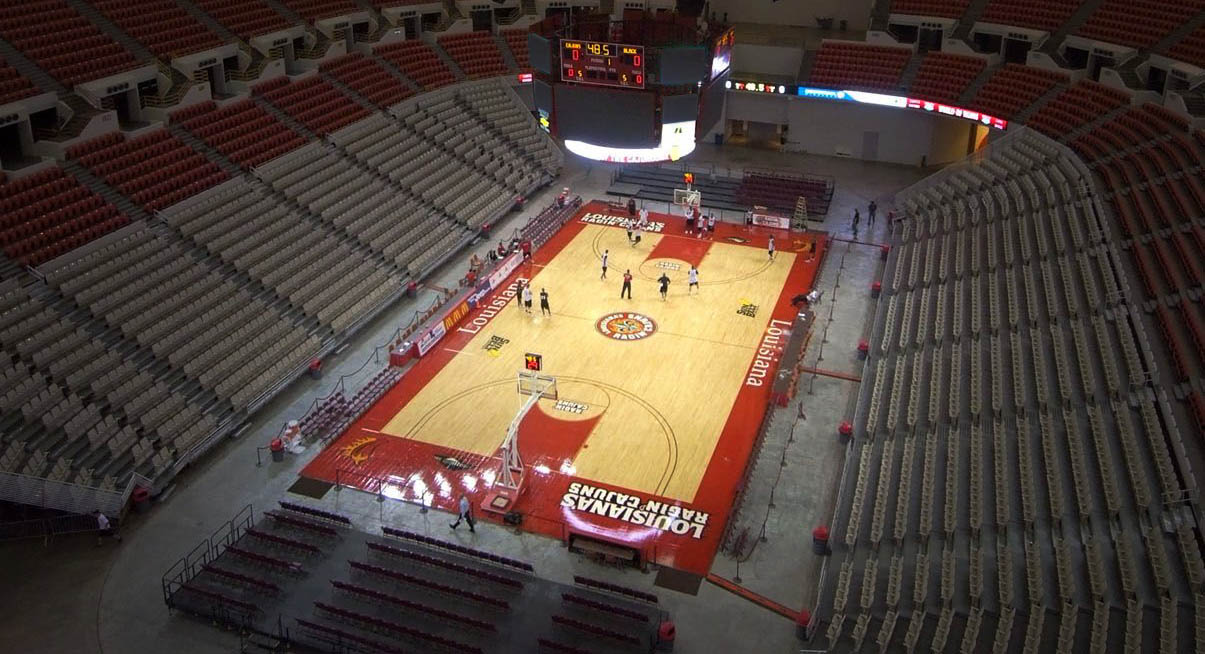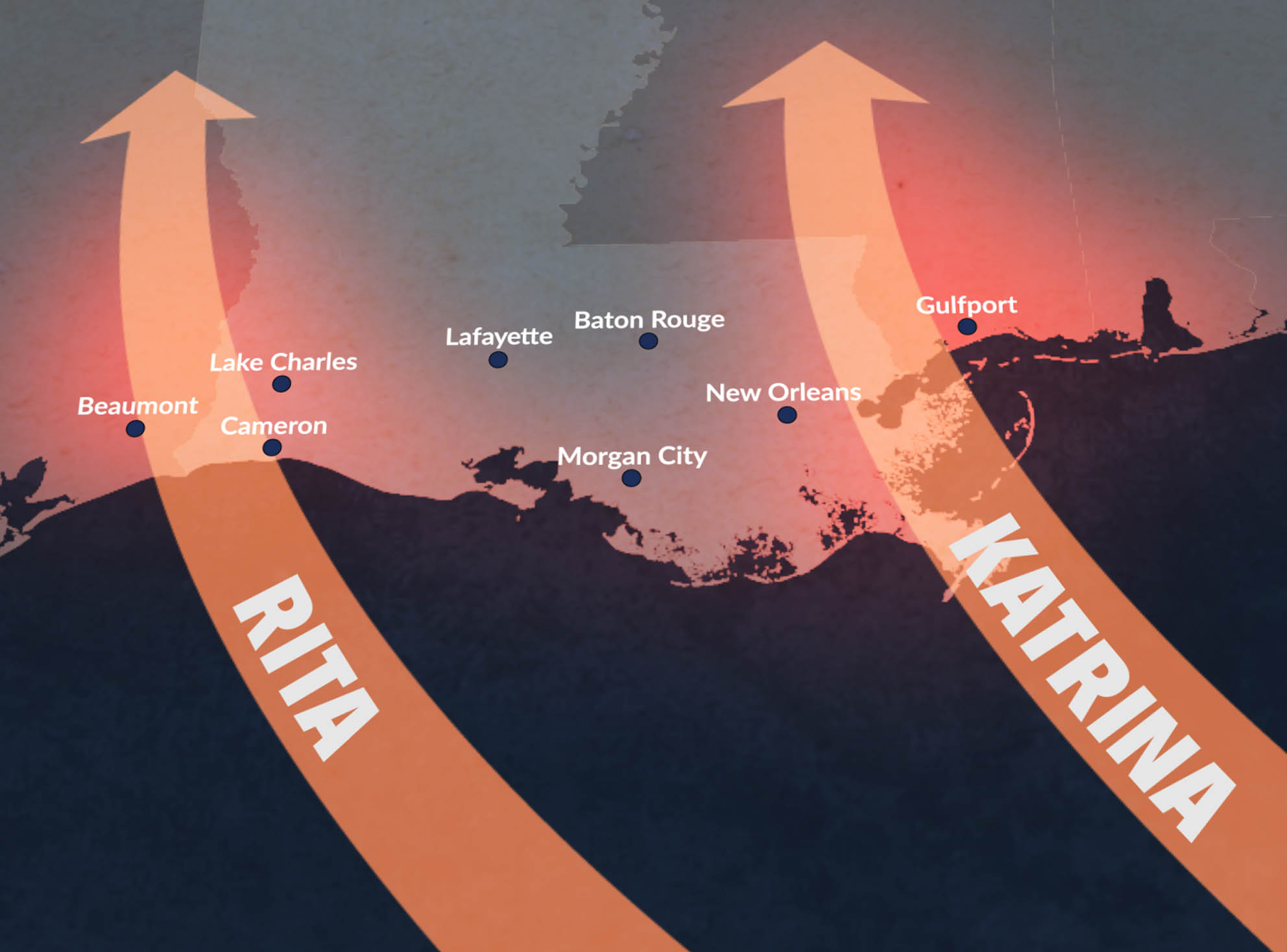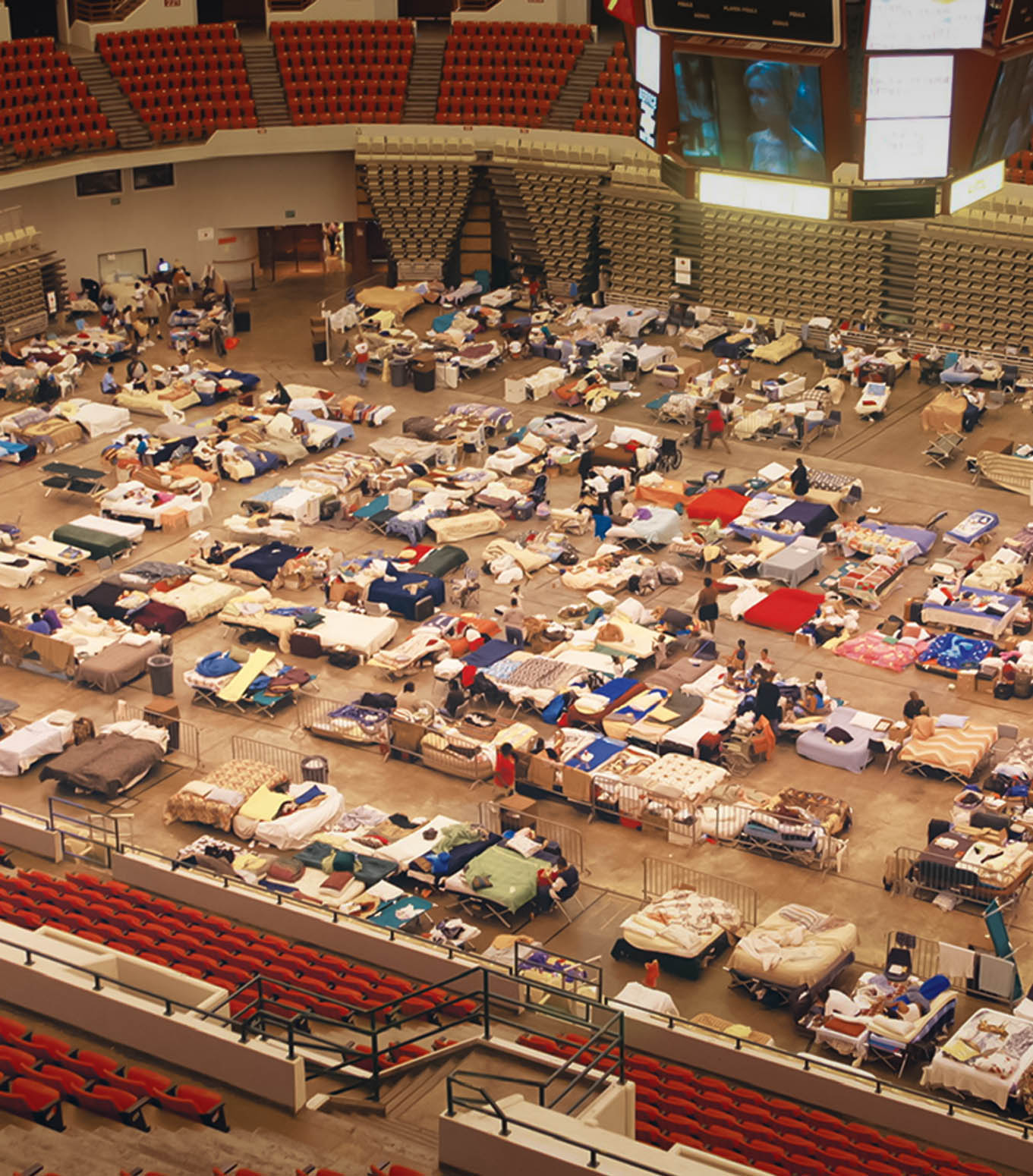
Hurricane Katrina took over 1800 lives, and hundreds of thousands of New Orleanians had to leave the city. It was the costliest disaster in US History. Hours after Katrina made landfall on August 29, 2005, it appeared that New Orleans had escaped major disaster. But soon, the levees protecting the city began to fail, and flooding drove away tens of thousands more who had remained behind. Exhausted, desperate evacuees, often with little more than the clothes they wore, fled New Orleans without knowing where the journey would end.
Many who left New Orleans over the following days found their way to Lafayette, Louisiana, 120 miles to the west. Lafayette’s population was just 115,000, but its Cajundome arena soon became a temporary home to over 18,000 storm victims. In the immediate aftermath of Katrina, little state or federal help was available to these evacuees. Cajundome City tells the incredible story of a community that came together and opened its arms to care for those in need.
The Nation's First Mega-Shelter
 Hurricane Katrina made landfall east of New Orleans at 6:10AM on August 29th 2005 as a Category 3 storm. It leveled parts of the Mississippi coast, and breached the levees in New Orleans. By 9:00AM there was 6-8 feet of water in the Lower Ninth Ward.
Hurricane Katrina made landfall east of New Orleans at 6:10AM on August 29th 2005 as a Category 3 storm. It leveled parts of the Mississippi coast, and breached the levees in New Orleans. By 9:00AM there was 6-8 feet of water in the Lower Ninth Ward. As New Orleanians left a flooded city, many found their way 120 miles west to Lafayette, Louisiana. The Cajundome arena in the city of Lafayette would become the nation's first mega-shelter.
As New Orleanians left a flooded city, many found their way 120 miles west to Lafayette, Louisiana. The Cajundome arena in the city of Lafayette would become the nation's first mega-shelter. The Cajundome serves as an entertainment venue, hosting 3-4 hour events a couple of days a week. With the sheltering effort, it transitioned to serving 24 hours a day, 7 days a week. As a result, the Cajundome needed substantial help. The Lafayette community responded. Each day the Cajundome need 300-500 volunteers to operate, and they had no trouble getting that from the people of Lafayette.
The Cajundome serves as an entertainment venue, hosting 3-4 hour events a couple of days a week. With the sheltering effort, it transitioned to serving 24 hours a day, 7 days a week. As a result, the Cajundome needed substantial help. The Lafayette community responded. Each day the Cajundome need 300-500 volunteers to operate, and they had no trouble getting that from the people of Lafayette. The Cajundome residents also needed medical care, which the Red Cross does not provide. As a result, the Lafayette medical community organized a volunteer medical clinic in the shelter. Over the 58 days, the doctors in the clinic performed 5,000 medical visits.
 When you're running a shelter, one thing you don't want to hear is that you have to evacuate the evacuees.
When you're running a shelter, one thing you don't want to hear is that you have to evacuate the evacuees. As Hurricane Rita approached the Louisiana coast, all the Cajundome residents were loaded in buses and sent north to Shreveport. The storm wasn't terrible for Lafayette, but it was devastating for the communities west of Lafayette.
 Within hours after the storm, the Cajundome was operational as a shelter again. This time taking in people from south-west Louisiana and Texas.
Within hours after the storm, the Cajundome was operational as a shelter again. This time taking in people from south-west Louisiana and Texas. The previous residents were not invited to stay in Shreveport. Following the storm, they were put back on buses and returned to the Cajundome.
 The Cajundome shelter was officially open for 58 days, during which it housed about 18,500 residents. These people arrived with nothing, and were cared for mostly through voluntarism and donations.
The Cajundome shelter was officially open for 58 days, during which it housed about 18,500 residents. These people arrived with nothing, and were cared for mostly through voluntarism and donations.






